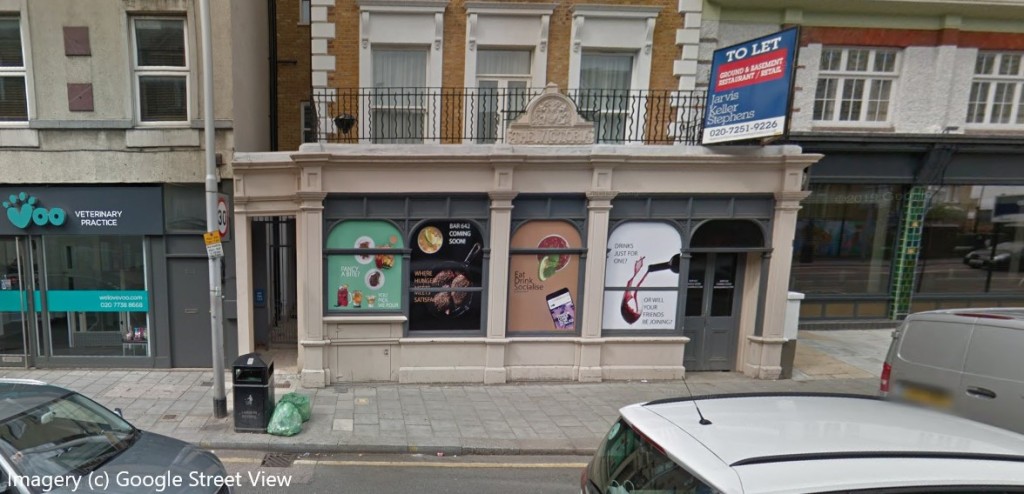
642 Wandsworth Road – between the Premier Inn and the Sainsbury’s – has been a nightclub one way or another for years. It was particularly popular in the days when it was Inigo, attracting a young crowd from far and wide; it then became Grind for a short time, saw a couple of years of building work where the upper levels were converted to flats, before reopening as Blake’s, and then its current incarnation Dirty Blonde. But it now turns out that the venue never actually had planning permission to be one. As far as Lambeth Council was concerned, it was a pub – which has quite a different set of rules attached. And this is despite Lambeth itself approving all manner of licenses over the years including both live and recorded music, and ‘Provision of Facilities for Dancing’!

This somewhat irregular situation – of running as a club despite not really having the planning for it – has led the owner to apply for a ‘Certificate of Lawful Development‘, which is essentially a request to the Council to confirm that the way the property is already running is OK in planning terms. This is a legal judgement for the Council rather than a test of whether the development is acceptable, so don’t be surprised if you live near it and weren’t consulted! The question is essentially – has the place run on a continuous basis as a club for ten years, without the Council challenging them for breach of planning? This is because of a rule in planning laws that if the owner can show that they ran (unofficially, without planning permission) as a club for ten continuous years, without the Council taking enforcement action, then the premises can legally become a nightclub on an official basis whether the Council likes it or not.
These are quite unusual cases to have to prove! The owner’s team of planning experts have had to go on an interesting journey, moving away from the technicalities of building space standards, local authority development policies and design and access statements to instead dig through the back archives of Resident Advisor‘s club listings – to find evidence of long-forgotten parties! It’s quite an interesting and unusual planning document, being essentially a collation of club flyers – as the planning experts have had to submit an admirably comprehensive bundle of evidence that the place has run as a club from 2012 to 2023 – like the one pictured, a TyDi-headlined event at Inigo from 2012. They did also supply lots of evidence of licensing of the venue (including that tell-tale ‘provision of facilities for dancing’ bit), as well as evidence of building control checks over the years.


There’s little doubt that the premises has been running as a nightclub – but the key thing turned out to be whether that use was ‘continuous’. Lambeth’s planners report explains that they did their own investigation – which they note they did by looking at Google street view imagery – where they recognised that this has clearly been a prominent club… but also spotted that the ground floor unit seemed to be unoccupied and not operating between 2014 and 2017, given that there were estate agent boards advertising the premises for lease as restaurant / retail (as shown above). The owner noted that there had been building works to convert the flats above, when the club was closed- but the planners felt that a relatively lengthy period of closure between 2014 – 2017 suggested only sporadic use over the ten-year period rather than continuous use needed to get planning approval by default. The Lambeth planners concluded that there was not sufficiently clear and unambiguous evidence to demonstrate that, on the balance of probability, 642 Wandsworth Road had been used as a nightclub for a consecutive period of at least ten years – and rejected the application.
So that leaves the premises as a pub or a bar – but not a club. It’s a maybe unexpected outcome, given that whenever the venue has been open, it has unarguably been a club (and a notably well known and popular one at some stages too, even if of late it has been rather lower profile) – but the long gap between tenants associated with the building work upstairs and a space without a lease in place has been the owner’s undoing here. It’ll be interesting to see what happens next – as in the meantime in an added twist, current tenant Dirty Blonde might have hit some sort of operational difficulties, with ominous hand-delivered bailiff-type notices spotted attached to the front doors. Maybe the premises will continue as a late night bar rather than a club. Maybe the owner will appeal, on the grounds that it was a club for most of the time and a short gap in use was to be expected with major building works upstairs. Maybe it’ll just plough on as is – and hope Lambeth Council’s planning enforcement remains as laid back as it has been for the last ten years…
If you found this little story about one of the more obscure aspects of planning policy of interest, you may want to see our other articles on planning in the Lavender Hill area.

Pingback: Is the proposed rough sleeper hub on the back burner? | Lavender-Hill.uk : Supporting Lavender Hill